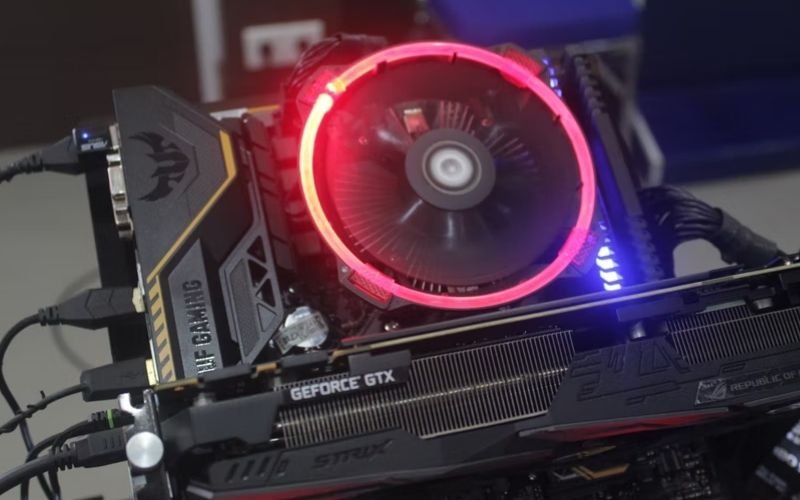Bitcoin mining, often dubbed as the backbone of the cryptocurrency ecosystem, is a fundamental process that ensures the integrity, security, and decentralization of the Bitcoin network. In this comprehensive guide, we will delve into the intricacies of how Bitcoin mining operates, shedding light on its significance, technical aspects, and the broader implications it holds for the world of digital finance.
Table of Contents
Bitcoin Mining Process Explained
At the heart of Bitcoin mining lies a process that involves solving complex mathematical puzzles. These puzzles are designed to validate transactions and secure the network against potential threats. The core concept behind this process is known as proof-of-work (PoW), where miners compete to solve these puzzles, with the first one successfully solving it gaining the privilege to add a new block of transactions to the blockchain.
The PoW mechanism serves a dual purpose. Firstly, it ensures that every transaction on the Bitcoin network is legitimate and not susceptible to manipulation. Secondly, it prevents double-spending, a scenario where a user spends the same Bitcoin more than once. Through this consensus mechanism, the decentralized nature of the blockchain is maintained.
Mining Hardware and Software
Bitcoin mining requires specialized hardware and software to perform the computational tasks necessary to solve the mathematical puzzles. Miners use devices called Application-Specific Integrated Circuits (ASICs) to efficiently handle the complex calculations. These ASICs are specifically designed for mining purposes and are much more powerful than traditional computer processors.
Mining software plays a crucial role as an intermediary between the hardware and the Bitcoin network. It allows miners to connect to the network, receive transactions, and submit solutions to the puzzles. The software also provides monitoring and control features, enabling miners to optimize their operations for efficiency.
The Role of Miners in the Network
Miners are the unsung heroes of the Bitcoin network. They validate and verify transactions, ensuring that they are accurate and authentic. When a miner successfully solves a puzzle and adds a block to the blockchain, they are essentially confirming the legitimacy of all transactions within that block. This distributed validation process creates a trustworthy and tamper-proof record of transactions.
Furthermore, miners play a critical role in maintaining the decentralization of the network. As numerous miners from around the world participate, no single entity can gain control over the network. This decentralized consensus mechanism is at the core of Bitcoin’s philosophy of financial sovereignty.
Bitcoin Mining Rewards
Incentivization is a key driver behind Bitcoin mining. As a reward for their efforts in validating transactions and contributing computational power, miners receive new bitcoins and transaction fees. The mining reward system helps regulate the creation of new bitcoins and is an integral part of the Bitcoin protocol.
Over time, the block reward decreases through a process known as the “halving.” Approximately every four years, the number of new bitcoins issued per block is reduced by half. This halving mechanism is designed to control the inflation rate of Bitcoin and to ensure a predictable supply schedule.

Energy Consumption and Environmental Impact
Bitcoin mining’s energy consumption has been a topic of debate and concern. The computational power required for mining, along with the competition among miners, has led to significant energy usage. Critics argue that this energy consumption has environmental implications, particularly if the energy comes from non-renewable sources.
However, it’s important to note that the industry is actively addressing this issue. Some mining operations are powered by renewable energy sources, reducing their carbon footprint. Moreover, ongoing research and innovation are exploring alternative consensus mechanisms, such as proof-of-stake, which require significantly less energy.
[Unveiling The Power Of Coinbase’s New Ethereum Layer-2 Solution]
Future Trends in Bitcoin Mining
The world of Bitcoin mining is dynamic and constantly evolving. One potential future trend is the transition from proof-of-work to proof-of-stake consensus mechanisms. Proof-of-stake relies on validators who hold and “stake” their cryptocurrency as collateral. This mechanism drastically reduces energy consumption, making it a more environmentally friendly option.
Advancements in mining hardware also hold promise. Manufacturers are continually developing more energy-efficient ASICs, reducing the overall energy demands of mining operations. Additionally, the integration of artificial intelligence and machine learning in mining operations could lead to increased efficiency and optimization.
Conclusion
Bitcoin mining stands as a testament to the ingenuity and collaborative efforts of individuals around the world. This decentralized process is the bedrock of the Bitcoin network, ensuring its security, immutability, and resilience. As the landscape of technology, economics, and sustainability continues to evolve, so does the realm of Bitcoin mining. By understanding its mechanisms and implications, we can appreciate the intricate interplay between innovation, security, and environmental consciousness that defines the world of digital finance.
Read Also: Shiba Memu Ignites the Crypto World: $2M Presale Surge as Meme Coin Races Towards Listing


Comments are closed.